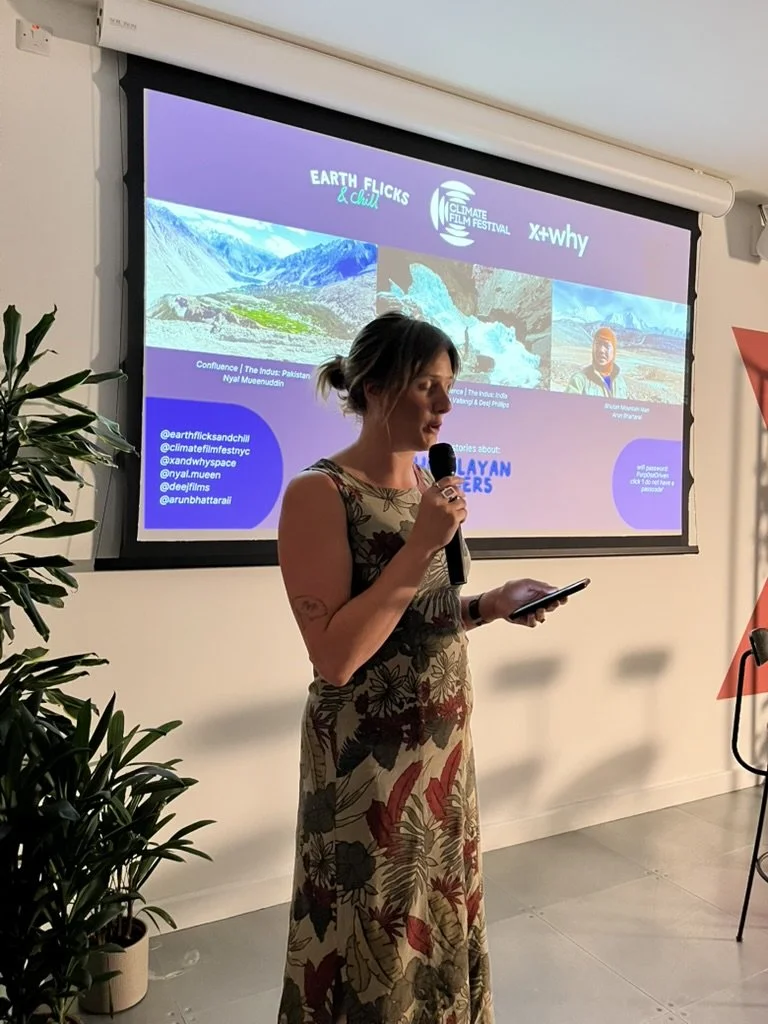As part of London Climate Action Week 2025, CFF was thrilled to partner with Earth Flicks & Chill (episode 7) for a live screening event and cinematic journey to remote villages in the Hindu Kush Himalayas. We screened three powerful short films exploring the beauty, fragility, and importance of Himalayan glaciers — and the people working tirelessly to protect them through ground breaking adaptation solutions.
About the Films:
Mountain Man (2022, dir. Arun Bhattarai):
Phuntsho Tshering (42) is the only glaciologist in Bhutan. He is also the only person that has permission to climb the mountains because they are considered to be sacred. Every year he travels for days on foot to the most remote corners of the Bhutanese Himalayas, measuring the glaciers as they rapidly melt because of climate change. Yangchen, his 11 year old daughter, has seen him disappear for months every year, ever since she can remember. As Phuntsho negotiates the difficult terrain, what gives him escape is sharing his story with his daughter through videos he makes for her on his phone. For Yangchen the mountain is the home of the "snow lion," where people cannot go, and every time her father steps on it he could be disturbing its abode. The locals say the consequences of angering the snow lion could be devastating. But Phuntsho is the only person who can measure the glaciers, and the mountains have to be climbed because the snow lion itself is losing its home.
Confluence: Storying the glacier-fed rivers of the Hindu Kush Himalaya (2025, dir Nyal Mueenuddin, Neelima Vallangi & Deej Phillips):
As part of the launch of The Confluence Project for the UN’s International Year of Glaciers’ Preservation, two short films from Zanskar (India) and Gilgit-Baltistan (Pakistan) spotlight life on the frontlines of glacier loss in the upper Indus Basin. In Zanskar, climate journalist Neelima Vallangi and filmmaker Deej Phillips tell an intimate story of shrinking glaciers, water insecurity, and the innovative ways mountain communities are adapting — from artificial ice reservoirs to solar pumps. Across the border in Gilgit-Baltistan, filmmaker Nyal Mueenuddin captures the risks and resilience of those living in one of the most glaciated regions outside the polar zones, where communities face increasing threats from glacial lake outburst floods (GLOFs) and disrupted water flows. Both films explore the shared vulnerabilities and ingenious responses of communities connected by the Indus River system. Together, they form a powerful call to recognise the global significance of Himalayan ice — and the urgent need for collective action to protect it.





